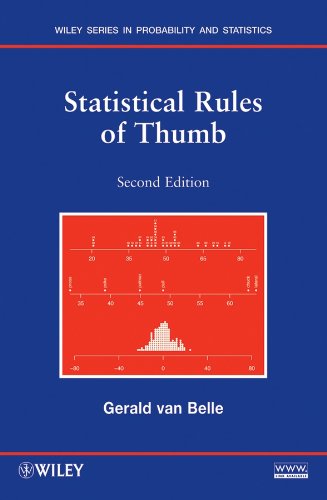Statistical rules of thumb pdf download
Par sandoval elwood le dimanche, septembre 4 2016, 08:31 - Lien permanent
Statistical rules of thumb. Gerald van Belle

Statistical.rules.of.thumb.pdf
ISBN: 0470144483,9780470144480 | 305 pages | 8 Mb

Statistical rules of thumb Gerald van Belle
Publisher: Wiley
Well, if we don't do a little statistics, then we don't know for sure, and we're just practicing faith-based marketing. These two questions are answered by practical and statistical significance, respectively. Intangible Assets including goodwill and leasehold may be included, but normally only in Rules of Thumb based on earnings/cash flow. None of the three seem to follow the rule with any sort of consistency but they are all in the ballpark of the rule, but not by much. And how delightful that the conclusion of 30 test runs aligns with the age old rule-of-thumb that >= 30 samples are needed for statistical significance. Maybe the ongoing nature of the BP blowout, leading to repeated rebuffs of all those suggestions that aren't likely to work, will teach some of the public that such rules of thumb exist and are useful. So we're closely just following the same rules of thumb here. Sources for Further Statistical Information. The numbers will follow but here are some takeaways (I didn't do any statistical analysis, this is just me eyeballing numbers and drawing conclusions that are probably not statistically significant): The rule of thumb is certainly good in terms of rules of thumb, I wouldn't follow it to the ends o f the Earth but it's definitely better than nothing. As explained by Moneyball author Michael Lewis, “one statistical rule of thumb in basketball is that a team leading by more points than there are minutes left near the end of the game has an 80% chance of winning. Well, the AIAG – Automotive Industry Action Group – has an SPC – Statistical Process Control – manual that actually establishes all those rules.